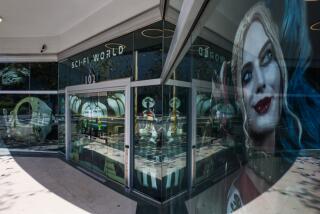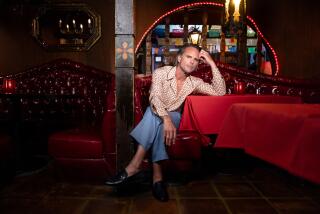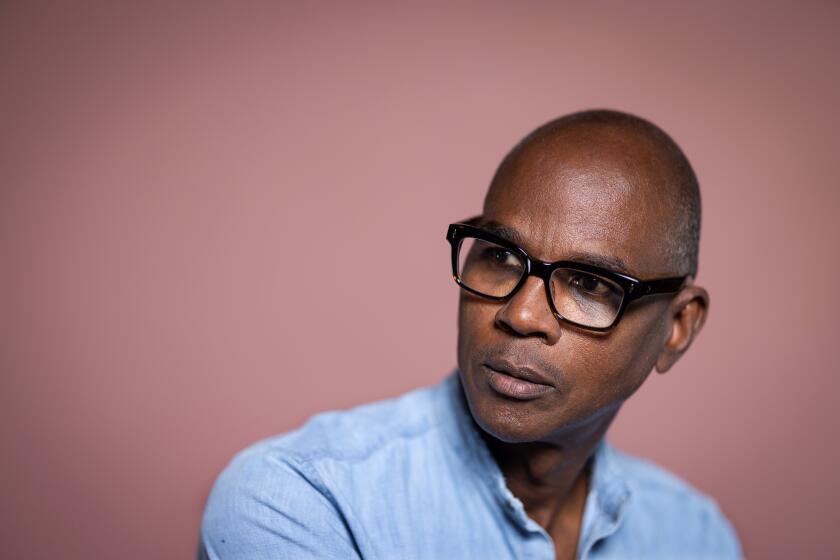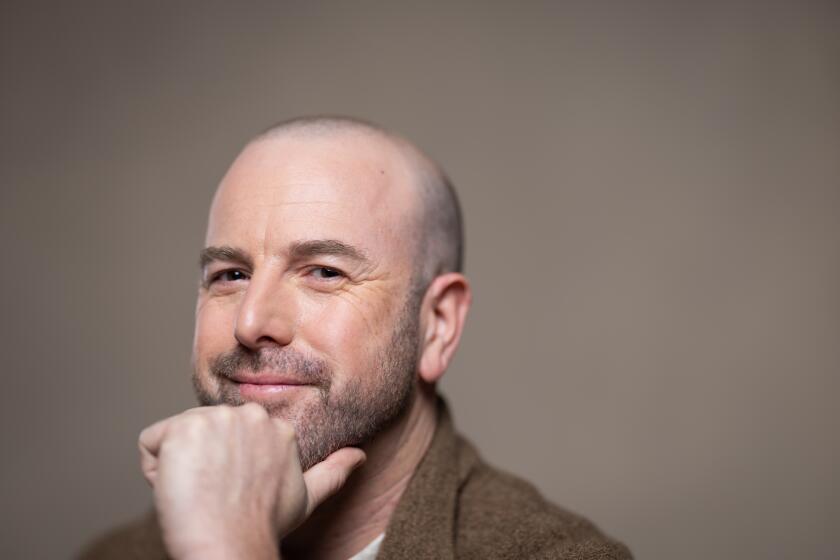CLASSICISM
Ninety miles from Key West, Cuban ballet icon Alicia Alonso staged her 19th International Havana Ballet Festival without relying on U.S. performers or ticket holders -- forbidden to attend because of the Bush administration’s recently tightened restrictions on travel to and business with Cuba.
Our loss. Alonso’s festival could have taught Americans how much classical dance can mean to a people and how selflessly and successfully a company of artists can serve its audience.
National Ballet of Cuba -- the company Alonso founded in 1948 and continues to direct at age 83 -- took on an impossibly daunting schedule during the 10-day event, which ended Nov. 6: 43 one-time-only performances of short pieces (sometimes incorporating guest stars), plus seven performances of full-length story ballets.
The highflying Joel Carreno danced at least once every day, usually in major roles, always with power to spare, and at the party after the final gala he looked ready for more. But the festival did take its toll on the company, in injuries, exhaustion and erosion of technical control.
Guest artists and companies from 10 countries gave 35 additional performances (sometimes just a solo or duet but often a full-evening work or program), while collateral activities expanded the festival’s reach into galleries, museums and theaters throughout this capital, along with the nearby communities of Matanzas, Santa Clara and Cienfuegos. Eventually, the event became a mosaic of extremes inseparable from those of Havana itself, a city of decaying elegance with a unique rhythm and inner heat even when it tries to look conventionally stately. We should all age so stylishly....
SHAKESPEARE’S ROLE
Most of the festival performances took place at the National Theatre, the Gran Teatro Sala Garcia Lorca and the Teatro Mella -- sometimes simultaneously. But on Nov. 1 and again three days later, National Ballet of Cuba danced Alonso’s “Shakespeare and His Masks: Romeo and Juliet” on a trestle stage in the Plaza Vieja, a picturesque square that was once the commercial center of Havana.
An audience of 2,000 sat on plastic chairs and perhaps an additional 1,000 stood in the square behind them or on balconies at the sides watching an hourlong dance spectacle set to music by Gounod. Indeed, Alonso adopted as one of her main narrative innovations a feature of the composer’s “Romeo and Juliet” opera: Instead of dying quickly, as in Shakespeare, the poisoned Romeo lived long enough for a final reunion, and major duet, with Juliet.
Shakespeare himself pulled the strings and danced the big solos in Alonso’s version, with Octavio Martin exuding maximum bravado and charm in the role. However, Alihaydee Carreno’s lyrical purity as Juliet and Rolando Sarabia’s partnering surety as Romeo made the Nov. 4 performance especially satisfying.
Ringed with Gothic arches on three sides and two levels, the set by Ricardo Reymena allowed the story to be told swiftly -- but toward the end Alonso drastically telescoped the action and lost the heartbreak that a major retelling should inspire. Moreover, it seemed beyond implausible for Friar Laurence to accidentally wander by just as Juliet was being forced to marry Paris -- with a bottle of sleeping potion up his sleeve....
MAN AS SWAN
The most famous ballet solo ever created is undoubtedly “The Dying Swan,” choreographed by Mikhail Fokine in 1907 for the legendary Russian ballerina Anna Pavlova. Since Pavlova’s death it has served generations of stars, and a new version served the nearly naked Giuseppe Picone at the Lorca during the festival’s 3 1/2 -hour closing gala.
Picone may not be the first male to ripple his arms a la Pavlova -- that honor probably belongs to the drag artists of Les Ballets Trockadero de Monte Carlo. But the Italian star danced with such technical refinement and mastery of expressive nuance that he claimed the Saint-Saens music and gender-bending concept as his own -- even if the final moments of Renato Zanella’s choreography suggested the gymnastic death-throes in the Ballet Folklorico “Deer Dance” more than anything a swan might suffer.
Zanella’s mercurial “Alles Walzer” solo for Simona Noja of the Vienna State Opera Ballet also proved a highlight of the gala, offering virtuosity not so much performed in the present tense as reclaimed from a woman’s memories of dancing to Strauss in some far off time and place.
In contrast, Tamara Rojo of England’s Royal Ballet delivered Cuban-style in-your-face bravura in the “Don Quixote” pas de deux: sky-sweeping extensions, long-held balances on pointe, double fouettes, no holding back.
Her partner was Romel Frometa, a young National Ballet of Cuba principal (in Cuba, one step below the top rank of “first dancers”) who seemed increasingly inspired by the festival’s ever-changing opportunities and here gave one of his strongest performances.
Bravura of another sort generated a furor when Spain’s Antonio Marquez danced passionate flamenco solos. He sometimes exploded in bursts of turns but also commanded attention when motionless except for one hand slowly, sadly sweeping in an arc in front of him, as if searching the world for a sign of hope.
The program offered many other memorable interpretations: the Cuban company’s Viengsay Valdes and, especially, Carreno in Russian classicism, Houston Ballet’s Leticia Oliveira and Zdenek Konvalina in Canadian modernism, and Spanish soloist Miguel Angel Berna in an uncompromising assertion of personal and artistic freedom.
Memorable for all the wrong reasons: Mario Razza’s “Kurt Weill Tango,” which featured veteran ballet star Carla Fracci prancing around in a nightie, trying to keep up with four seriously and pointlessly underdressed young men from the Rome Opera Ballet.
Yes, yes, Fracci is certainly spry for 68. But that’s all, and even now there’s got to be some better role for one of the greatest Giselles of the 20th century than such witless, danceless personal appearances in beefcake charades.
THE CUBAN NIJINSKY
In 1998, teenage virtuoso Rolando Sarabia won gold medals at ballet competitions in Paris; Tokyo; Varna, Bulgaria; and Jackson, Miss. European critics quickly dubbed him the Cuban Nijinsky -- as far ahead of the pack as Mikhail Baryshnikov was 30 years ago when he came to the West.
Now 24, Sarabia likes the comparison. “Since I was a child, and when I started my career, Baryshnikov has always been an idol for me,” he said, speaking through an interpreter in the courtyard of the National Ballet of Cuba studios after company class. “I have seen lots of dancers, very good ones, but no one has been like him.”
Cast mostly in the festival’s homegrown one-act ballets rather than full-length classics, Sarabia never entered the stage with any “Here I am” pizazz.
Instead, he usually fixed his attention on the spot where he’d perform his first solo: a space he transformed with perfectly sculpted jumps and turns too fast to count -- turns sometimes suddenly suspended and then reinitiated or refocused as if by magic.
Like the young Baryshnikov, he did it all dryly, matter-of-factly: the future of male technique a process to be explored soberly, step by step. And though he never stopped smiling when talking about it, Sarabia knows that it all could end at any moment, just as it did four years ago with a serious knee injury that eventually led to an operation and an eight-month recuperation.
“I am dancing now even though I need another operation on my knee for everything to be just fine,” he said. “It is very important to me to go on doing good work, and I’m used to dancing with this [condition].
“When I am dancing, I just feel like I own the stage, and sometimes I feel like crying because there is so much emotion coming from the audience. I thank God every day when something like this happens.”
DEBUSSY FOR PUPPETS
With borrowings from “The Nutcracker” and “Petrushka,” plus a tiny wooden heroine wearing red toe shoes, the puppet play “La Caja de los Juguetes” (The Toy Box) definitely had ballet on its mind as presented by the Teatro de las Estaciones of Matanzas on Oct. 30 at the National Puppet Theatre in Havana.
Mostly set to Debussy’s score for the children’s ballet that gave it its title, the work featured black-light effects, scenic transformations, and shadow, rod and hand puppets, as well as sequences in which the puppeteers interacted with their creations and became life-size projections of them.
Though it played to children, the production wasn’t always childish: It included one sequence in which puppets and people worked together to bring a fallen soldier back to life, and an ending showing the puppets visibly aging, content with watching their children display the energy they used to possess.
It’s easy to think of Cuban dancers and audiences as hopelessly obsessed with athleticism -- forever fixated on pirouettes and fouettes. But in moments like these, or when the crowd screamed wildly for a dancer who had taken a bad fall, gotten up and gone for broke, you glimpsed the deep compassion and respect for risk in their hearts and souls.
Cubans have been living on the edge for a long time now. And dancing on the edge -- of technique, expression, conceptual innovation -- is what they want from every artist, domestic or foreign, who steps onto their stages. That’s what Alonso gave them, night after night, in festival 19 as she conquered her own near-blindness and restricted mobility to show us something essential about why the arts and artists of her country are so alive and indomitable.
Lewis Segal is The Times’ dance critic. He can be contacted at
More to Read
More to Read
More to Read
The biggest entertainment stories
Get our big stories about Hollywood, film, television, music, arts, culture and more right in your inbox as soon as they publish.
You may occasionally receive promotional content from the Los Angeles Times.






